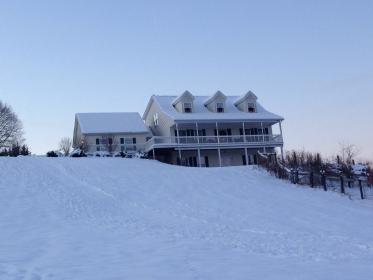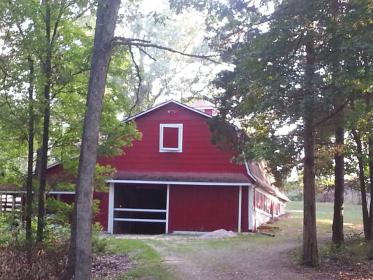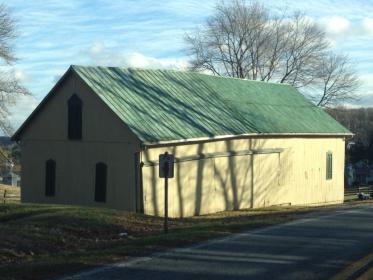[QUOTE=AKB;7368557]
I would try to put the barn a little closer to the house if you can. A barn is a wonderful place for teenagers to drink, smoke, and party. Ideally, you and your dogs should be able to clearly see the barn from your house. Also, you want to be close to the barn so trudging out to feed at 6am, in the dark and cold, doesn’t seem so bad.[/QUOTE]
Great points! I chose that location for several reasons. It is in my largest field where the horses spend most of the summer and right next to the paddock that is a sacrifice area in winter and schooling area when dry enough. I have another half acre paddock on the other side of the house that I can use for short rotations off the big one but it gets eaten down fast. There could be an option in the future to buy the one acre field nearest to the house that cuts into the property so far. Without it we have 8.2 acres.
It is downwind of the house and not near to any neighbors homes. We have some zoning regs that require a barn to be in the “back” of the property. Also, we’re only zoned for a “private stable”. It’s zoned conservation, not AG. While I’m sure they grant waivers, property stand offs leave this location as pretty much the closest place we could put a barn. :mad:
My driveway curves upward and is very steep at the curve. Anything closer to the house would be harder to access for hay deliveries, vet, farrier, etc. Our 4wd tractor could not make it up that curve several times this winter. It’s a doozy!
I would like to keep the area inside of the driveway fairly open as the front yard. The back is only about 20’ deep behind the house. I may put up some temporary fencing to section it off for grazing once we have a driveway hate put up and the perimeter fence completely secure.
Straight line distance it isn’t too far. It really isn’t a big property.








